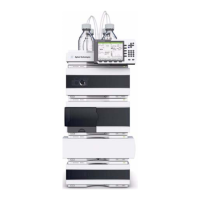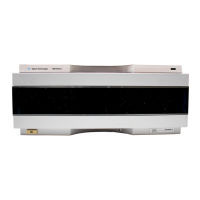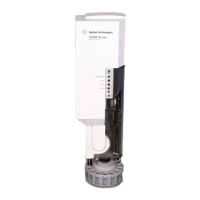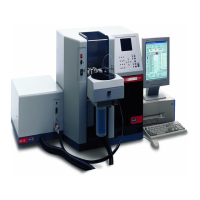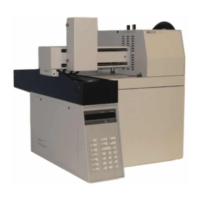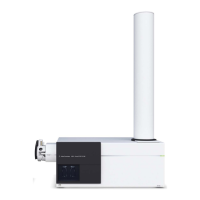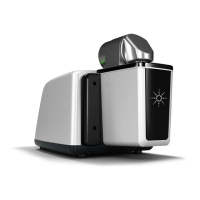1260 Infinity Binary LC - System User Guide 55
Optimization of the Agilent 1260 Infinity Binary LC
3
How to Achieve Higher Resolution
In isocratic separations, increasing the retention factor, k, results in better
resolution because the solute is retained longer. In gradient separations,
the retention is described by k
*
in the following equation:
where:
• k
*
= mean k value,
• t
G
= time length of gradient (or segment of gradient) (min),
• F = flow (ml/min),
• V
m
= column delay volume,
• Δ%B = change in fraction of solvent B during the gradient,
• S = constant (ca. 4- 5 for small molecules).
This shows that k and hence resolution can be increased by having a
shallower gradient (2 to 5 %/min change is a guideline), higher flow rate
and a smaller volume column. This equation also shows how to speed up
an existing gradient – if the flow is doubled but the gradient time is
halved, k
*
remains constant and the separation looks the same but
happens in half the time.
Any reduction in extra- column volume will reduce dispersion and give better
resolution. This is already optimized in the 1260 Infinity Binary LC with
narrow bore (0.12 mm i.d.) capillaries (check that the shortest length is used
between column and detector) and the Max- light cartridge flow cell.
Finally, any gains in resolution must be preserved by having data
collection which is fast enough to accurately profile the narrow peaks.
In summary, the following steps should be considered to increase resolution:
• The first step in improving resolution is always to test different
stationary phases and to select the column with the best separation.
This is the parameter that is of most importance for resolution.
• The second step is to use long columns or even coupled columns to
increase the plate number.
• A third step is to shift peaks to higher retention factors. For k values
of 5 to 10, the impact is significant. With higher k values, the effect is
very low.
In practice, this means that longer columns with appropriate selectivity
give better resolution.
